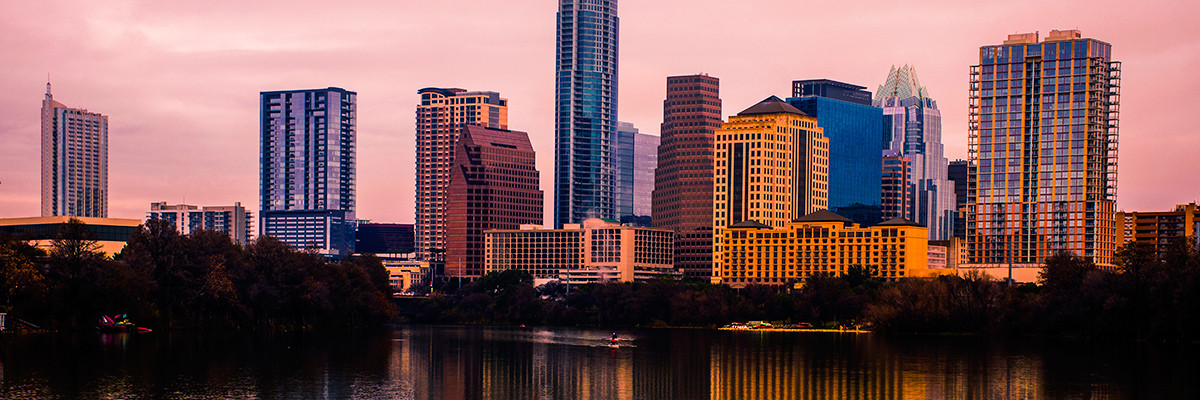
Authors
-
Julia Robinson
Former Manager, Communications, BSR
The rise of digital and the impacts of our warming planet have disrupted nearly everything and everyone. In this way, we live in an age of disruption, to the point where the term itself is a cliché—but an inescapable reality.
I spent last week in Austin, Texas, for South by Southwest (SXSW) Interactive, which captures much of the digital zeitgeist. What I saw at SXSW was that as we wring our hands over the profound alterations we see in our world, there is room for optimism; “disrupted” systems, such as traditional media companies, are adapting to a new normal, re-establishing their worth, and sometimes getting ahead of the disruptors.
With newsrooms facing shrinking staffs, smaller ad buys, and the rise of new media companies that draw in readers through cat videos instead of current events, experts have written countless obituaries for traditional media in recent years. But well-reported, high-quality journalism isn’t dead—it’s what readers want, as demonstrated by changes within “disruptive” new media companies. Two examples cited in a panel on new media that I attended: Mashable recently hired Heidi Moore, previously of The Guardian, as its new business editor, and Buzzfeed is starting to publish original, in-depth content, such as coverage of events in Ukraine.
Another clue that traditional journalism is still alive and kicking is the resurgence of “long form” articles—original, reported stories of several thousand words in length. In a panel on this topic, Politico Editor Susan Glasser referred to the current era as a “Golden Age” for long form content. Traditional media companies such as The New York Times and The Washington Post are integrating digital elements into long form stories to create interactive multimedia features as a response to audiences who are consuming content across different platforms and devices, and who want their stories to be immersive.
In a landscape characterized by 140-character tweets and 10-second Snapchats, the staying power of long form is good news, but Glasser and other panelists warned that when it comes to digitizing long form stories, the reporting has to stand on its own. “You can ‘Snowfall’ anything,” Glasser said, referring to The New York Times avalanche story widely considered to have pioneered the combination of high-quality reporting and multimedia elements, but that when the reporting does not live up to a high standard, “you can have a big miss.”
In the realm of sustainability and environmental coverage, we are also seeing a shift in how climate change is reported in the media, and how people understand the issue. During the panel “Digital-Age Climate and Extreme Weather Reporting,” Huffington Post’s Kate Sheppard and Climate Central’s Alyson Kenward pointed out that an early challenge in reporting on climate change was its distance from readers’ lives—most of the narrative focused on Arctic ice melt and polar bears. But with extreme-weather events increasing globally, reporters and scientists alike are more willing to attribute these events to climate change. Now, reporters are getting to the bottom of “what’s going on outside [readers’] windows,” from the California drought, to floods in the United Kingdom, to food insecurity in Syria, making stories more personal and tangible.
Additionally, there’s been a shift in the climate conversation toward solutions. While former U.S. Vice President Al Gore brought his usual sense of urgency and apocalypse to his SXSW keynote address, he also underlined the explosion of renewable energy, which has grown far more rapidly than anyone imagined. One example: In Bangladesh, according to Gore, a new solar panel is deployed every 30 seconds.
Gore’s optimism is a far cry from his “An Inconvenient Truth” days, and it’s an effective approach to a topic that can seem insurmountable. This shift in climate communications and reporting is, in fact, changing the conversation—Gore even expressed optimism about the COP21 climate talks this December, predicting, “There will be a ‘yes’ in Paris.”
Companies who are working on sustainability issues can glean lessons from these adaptations and shifts. Whether disruption comes from an upstart company, technology, or environmental phenomenon, the companies that treat disruption as the first sign of progress will prevail. By seizing on the methods of disruption, they can transform themselves into resilient businesses—and change the conversation on the sustainability challenges that we all face.
BSR’s latest sustainability insights and events straight to your inbox.
Let’s talk about how BSR can help you to transform your business and achieve your sustainability goals.